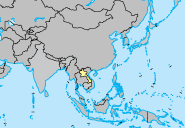Children of Laos
Realizing Children’s Rights in Laos
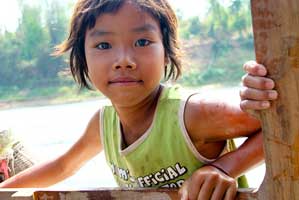
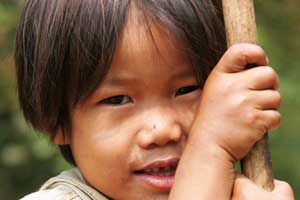
In the past few years, Laos, situated in the heart of Asia, has seen an exponential increase in its population. However, this development has not reduced the number of children living in poverty.
Red level : Difficult situation Population: 6,9 million Life expectancy: 63,8 years
|
Main problems faced by children in Laos:
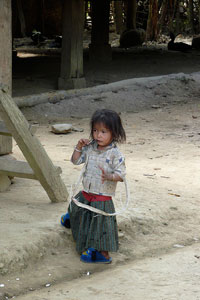 More than half of the Laotian population live below the poverty line. Poverty often poses serious risks to children’s rights.
More than half of the Laotian population live below the poverty line. Poverty often poses serious risks to children’s rights.
The rights of young Laotians, living in poverty, are frequently violated. Discrimination prevents them from benefiting from certain important rights such as the right to health and the right to education.
The child mortality rate in Laos is quite high with 6% of Laotian children dying before the age of five. This worrisome figure is the result of the lack of hygiene, medical supplies and equipment as well as trained staff.
These shortcomings increase the risk of epidemic diseases breaking out. Today, in Laos, people are still faced with diseases such as polio and even tetanus whereas vaccination campaigns have been set up even in the most isolated places to eradicate them.
Laos does not have a high AIDS prevalence rate. However, its geographical location may lead to an increase in the infection rate in the future. It should also be noted that since sexual tourism is a common phenomenon in the region, AIDS have the potential of spreading rapidly.
In this sector, increased efforts are required to ensure that each and every Laotian child goes to school, unlike today. Indeed, 20% of children do not enjoy the right to education which is in contravention of the Convention on the Rights of the Child.
Furthermore, most children live in isolated villages where different ethnic languages are spoken, such as Akha, whereas the official language used in school programs is Lao. This linguistic barrier reflects a form of discrimination towards such children as they are thus prevented from attending to school. To remedy this, the government has improved the quality of teaching in some schools by appointing bilingual teachers.
Poverty is another reason which obstructs children from enjoying their right to education. Some school fees may be too high for the family to afford and this may prevent children from attending school.
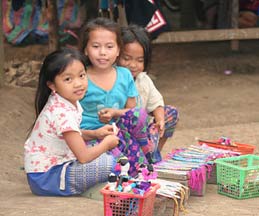 Many children in Laos are victims of physical and sexual abuse. Such abuse can take place in the family circle and has detrimental consequences for children. A recent study has shown that nearly half of street children in Laos ran away from home because they were subjected to domestic violence.
Many children in Laos are victims of physical and sexual abuse. Such abuse can take place in the family circle and has detrimental consequences for children. A recent study has shown that nearly half of street children in Laos ran away from home because they were subjected to domestic violence.
Sexual tourism is another form of abuse that is commonly prevalent in Laos. Many children are bought by Thai or Chinese procurers to “supply” sex networks.
These children are often imprisoned in brothels or used for pornographic purposes. They live in insalubrious conditions with little food and water and are often the ill-treated by the procurers.
Fear of reprisals makes it especially difficult for girls to get away from such circumstances and hence many of them resort to drugs as means of escape from reality.
Hence, the Laotian government must make a greater effort to protect those who are subjected to such physical and psychological violence and abuse.
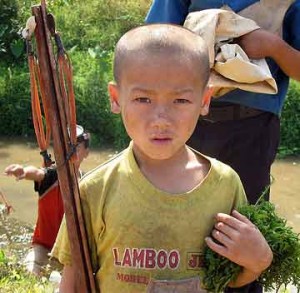 Child labour is an issue which prevails in Laos, even in modern times as an estimated 10% of children in Laos, work.
Child labour is an issue which prevails in Laos, even in modern times as an estimated 10% of children in Laos, work.
Such children, instead of attending school, are required to work to fulfil the needs of their families. They mainly work in agriculture, fishing or manufacturing.
Due to atrocious working conditions, these children are more susceptible to disease and illnesses. Furthermore, in order to avoid such arduous forms of physical labour, some children proceed to work in bars and from there, they move on to prostitution.
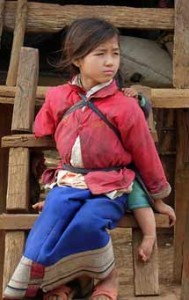 HIV and poverty directly affects a number of children in Laos and in addition, have also led to an increase in the number of orphans.
HIV and poverty directly affects a number of children in Laos and in addition, have also led to an increase in the number of orphans.
There are few organizations that exist to address the problems faced by orphaned children. Abandoned and obliged to look after themselves, orphans live in insalubrious conditions and extreme poverty.
Living conditions in the streets are terrible; every day is a struggle for survival as they search for food and water.
Nearly 30% of births are not officially registered with the Laotian authorities. This development poses difficulties for the children concerned as they are unable to fully enjoy their rights. It is as if from the time they are born, they are invisible to society.


